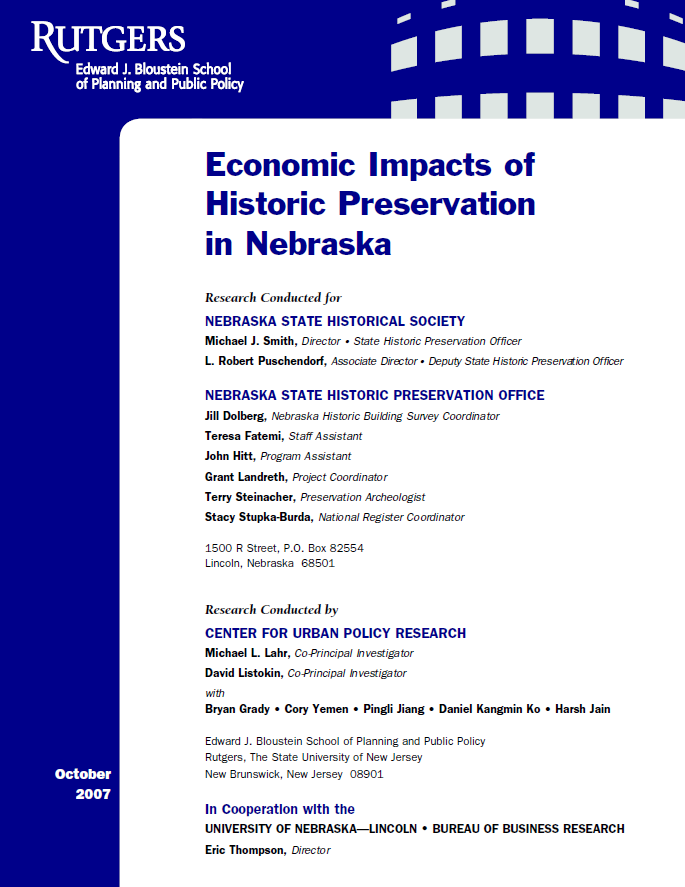In the forty-one years since Congress passed the National Historic Preservation Act, America has advanced a preservation ethic. Two programs of the National Park Service of the United States Department of the Interior are keys to the preservation movement, measures of the wealth of historic properties in our state and nation. The National Register of Historic Places now lists 70,000 entries throughout the United States, and the Historic Sites Act, which dates back to 1935, continues to memorialize our most special places. Nebraska will reach 1,000 listings on the National Register of Historic Places in 2008 and is proud of its 24 National Historic Landmarks.
Historic preservation has spawned and/or energized countless organizations, both government-based and purely private in nature, at the national, state and local levels. An articulate and dedicated public has responded to the combination of history, architecture, archaeology, economics, and planning to advance historic preservation across the nation. Museums and historic sites lie at the heart of the fast-growing cultural tourism movement with positive economic benefits for Nebraska.
We can say with conviction and pride that the preservation and use of our historical resources is not only about the past, but is today very much about the quality of our lives and our living spaces. Our history is at the heart of what we will leave for the generations to come.
